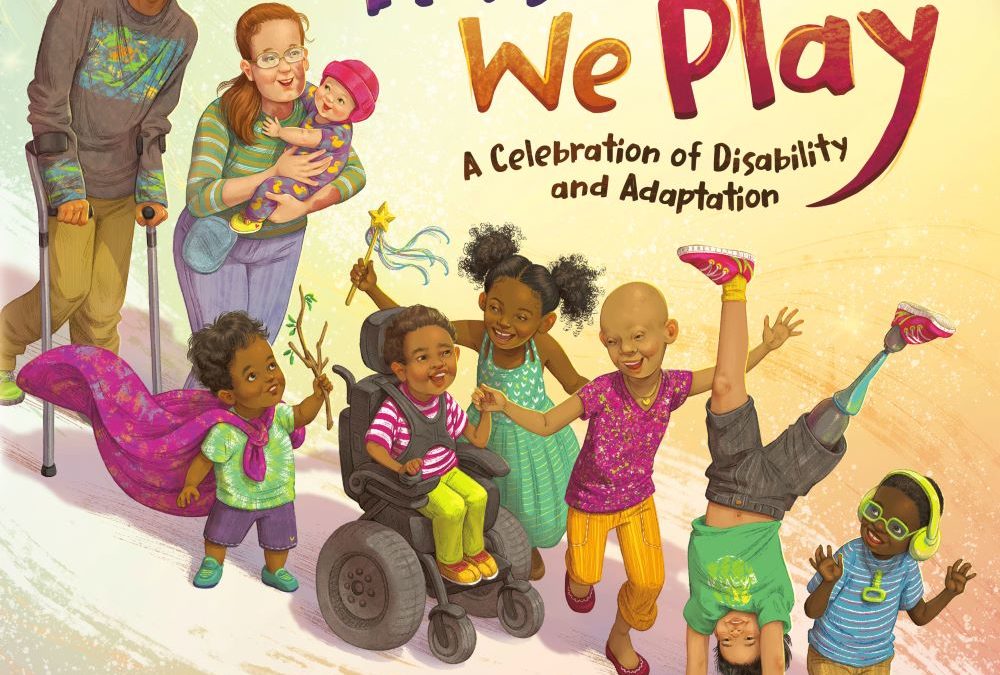This Is How We Play: A Celebration of Disability and Adaptation by Jessica Slice and Caroline Cupp, illustrated by Kayla Harren; Dial Books for Young Readers, 2024.
“There is no greater disability in society, than the inability to see a person as more.”
~ Robert M. Hensel, Guinness World Reeords holder for the longest non-stop wheelie in a wheelchair, with a distance of 6.178 miles
Why read aloud?
We gather and settle into a safe space to share a book. We talk and reflect, exchanging thoughts, exploring concepts, building background knowledge, and forging community.
Read-aloud sessions are inclusive: there are no reading skills or reading level barriers. Learning obstacles are mitigated when we (educators, parents, and caregivers) select age-appropriate, length-appropriate stories based on interests and needs. When read-aloud sessions are routine, children become comfortable voicing their perspectives. They grow in active listening skills and learn to respect the thoughts, feelings, experiences, and beliefs of others. Read-aloud sessions are immersive while also offering the comfort of distance from the challenges the characters encounter. Read-alouds provide children with the opportunity to see themselves, see others, find validation, and contemplate solutions to conflicts and challenges that they may not have otherwise considered.
Reading aloud is a positive, secure, stress-free “learning without struggle” experience grounded in a book, the value of which cannot be overestimated.
“You think your pain and your heartbreak are unprecedented in the history of the world, but then you read. It was books that taught me that the things that tormented me most were the very things that connected me with all the people who were alive, or who had ever been alive.” ~ James Baldwin
Why this book? Why will it matter to kids?
More than a billion people around the world are disabled, making the disability community the largest minority, according to disability rights activist and author Emily Ladau. In her book, Demystifying Disability: What to Know, What to Say, and How to be an Ally, Ladau reflects, “All of us—nondisabled and disable people alike—have more to learn about how to make the world a better, more accessible, more inclusive place.” Helping children become aware, appreciative, supportive, generous, and comfortable with disability is social-emotional learning at work.
Levels and Layers of Learning
Grade level: K-3
Social-Emotional Learning Themes
Acceptance, compassion, concern, connection, conservation, courage, creativity, curiosity, dedication, empathy, empowerment, encouragement, fortitude, friendship, generosity of spirit, gratitude, generosity of spirit, hope, inspiration, integrity, kindness, loyalty, perspective, resilience, respect, responsibility, relationship skills, self-assurance, self-awareness, self-management, self-reliance, social awareness, understanding
Content Area Connections: Social-Emotional Learning
Using This Book in the Classroom
Hit the Ground Running Ready Resources for Educators, Homeschoolers, and Parents
The back matter of This Is How We Play offers age-appropriate suggestions for children on ways to learn about and discuss disability, a glossary explaining the disabilities represented in the book, and a guide for adults on how to encourage discussion about disabilities with children.
Demystifying Disability: What to Know, What to Say, and How to be an Ally by Emily Ladau is an excllent, accessible reource for adults on disability that covers topics from how to refer to a person with a disability to intersectionality, ableism, disability etiquette, and more.
Learn more about Kayla Harren and her books on her website.
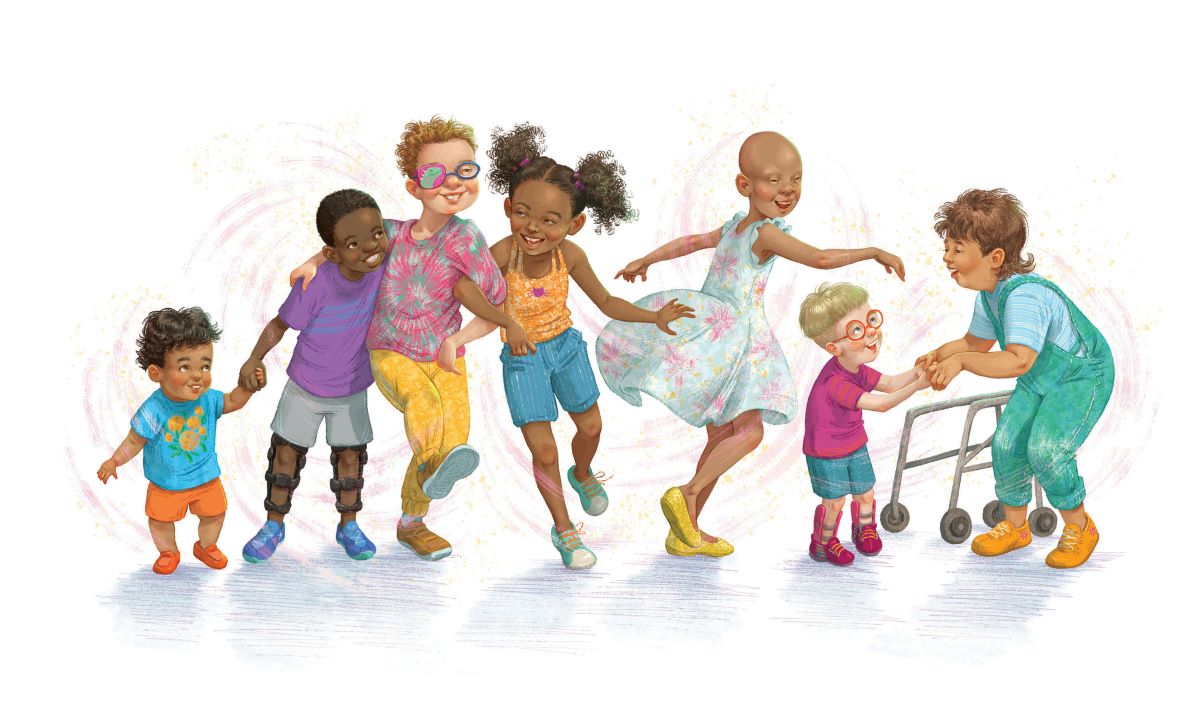
Illustration © Kayla Harren
Write Away! Ideas to prompt writing
List ways you can include others and make them feel welcome. Illustrate your favorite suggestion to place on a classroom mural.
What is your favorite illustration in the book? Explain.
Disabled people might look or move differently, but no matter what kind of body, everybody plays! Tell about your favorite form of play.
Poetry Break Related poetry to recite before or following the reading of this book
Poetry breaks fit perfectly into the framework of the school day. These brief moments can signal change, smooth or frame transitions—from beginning or ending the day to lining up for lunch; from zipping up backpacks and jackets to shifting from one subject to the next. Poetry breaks can reset mood or tone, providing a moment to pause, reflect, and breathe. Reading a poem aloud typically takes less than a minute, yet it can introduce or reinforce a concept, provide clarity, celebrate language, exemplify rhythm, enhance vocabulary, expand understanding, increase attention span, initiate reflection, spark imagination, or simply summon a giggle. And, poetry soothes and strengthens the spirit.
“Poetry builds resilience in kids and adults; it fosters Social and Emotional Learning. A well-crafted phrase or two in a poem can help us see an experience in an entirely new way.” ~ Elena Aguilar
Pair This Is How We Play with poems about friendship, confidence, and agency.
Suggestions include:
- Dictionary For A Better World: Poems, Quotes, and Anecdotes from A to Z by Irene Latham and Charles Waters, illustrated by Mehrdokht Amini
- Emotion Poems and “Best Friends” by Irene Latham; This Poem Is A Nest by Irene Latham, illustrated by Johanna Wright
- “If I Were in Charge of the World” by Judith Viorst; If I Were in Charge of the World and other worries by Judith Viorst, illustrated by Lynne Cherry
Michelle Schaub, author of the informational poetry book, Leafy Landmarks: Travels with Trees (see Children’s Book Corner post) offers creative suggestions for bringing poetry into the classroom in her newsletter, Poetry Boost. This month, as the school year begins, she poses a plan for writing a collective poem to build classroom community.
Following is a recently released poetry book of note:
- Wild Brunch: Poems About How Creatures Eat by David L. Harrison, illustrated by Giles Laroche; vivid art and fact-filled poems about the feeding habits of a variety of animals of the sea, land, and air, including jellyfish, otters, hippos, house flies, bats, and seagulls
And Then There’s This…
Enrichment activities, related books, online resources, craft projects, and ideas for further study
Book Collection Suggestions
Following are related books of interest:
- Anybody Here Seen Frenchie? by Leslie Connor; middle grade novel centering on neurodiversity (see Children’s Book Corner blog post)
- Invisible Isabel by Sally J. Pla, illustrated by Tania de Regil; chapter book centering on neurodiversity
- I Will Dance by Nancy Bo Flood, illustrated by Julianna Swaney (see Children’s Book Corner blog post)
- Next Door by Deborah Kerbel, illustrated by Isaac Liang; wordless picture book centering on a deaf child (see Children’s Book Corner blog post)
- Out of My Mind by Sharon M. Draper; middle grade novel in which main character has cerebral palsy; see also sequels, Out of My Heart and Out of My Dreams
- Real by Carol Cujec and Peyton Goddard; middle grade novel based on a true story
- Roll with It by Jamie Sumner; middle grade novel in which main character has cerebral palsy; see also the sequel, Time to Roll
- What’s Silly Hair Day with No Hair? by Norene Paulson, illustrated by Camila Carrossine (see Children’s Book Corner blog post)
- Wonder by R. J. Palacio; middle grade best seller; see also, the story collection Auggie & Me: Three Wonder Stories
Find an extensive list of additional related books on this Children’s Book Corner blog post.
Kayla found these adult resources especially helpful as she researched disability in preparation for creating the illustrations for This Is How We Play:
- Demystifying Disability: What to Know, What to Say, and How to be an Ally by Emily Ladau
- Disability Visibility: First-Person Stories from the Twenty-First Century by Alice Wong (This Is How We Play co-author, Jessica Slice’s essay, “Impostor Syndrome and Parenting with a Disability” is included in this anthology.)
Have a title to suggest? Scroll down to add it in the Comments section at the end of this post.
Meet the Illustrator
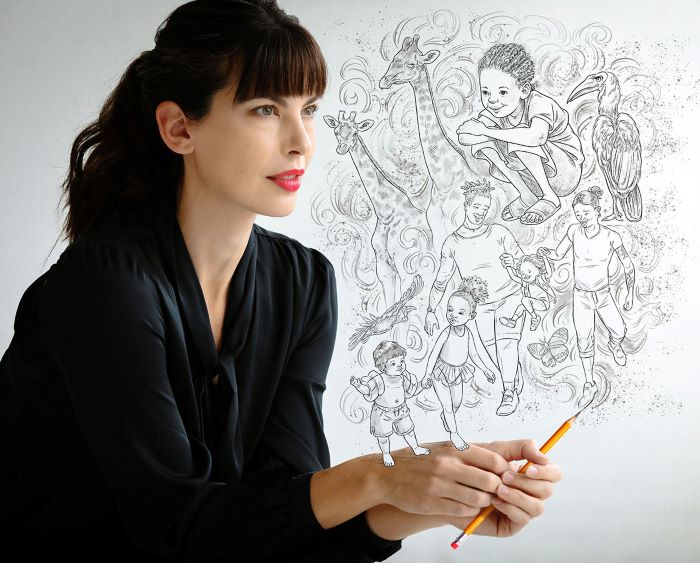
Photo credit: Natalie Jennings
Kayla Harren graduated from the School of Visual Arts in New York City with a BFA in Illustration. Books she has illustrated include Calvin, winner of the 2022 Lambda Literary Award, A Boy Like You, winner of the 2019 EUREKA Gold Award, The Boy Who Grew A Forest, winner of the 2020 Crystal Kite Award, and Thursday, featured in the Society of Illustrators Original Art Show. Kayla loves animals, playing volleyball, hiking, and eating cookies with frosting. She lives in Minnesota with her husband (the incredible tattoo artist Peter Harren) and their adorable dogs. Learn more by visiting Kayla’s website and find her on Instagram.
Backstory: Q & A with Kayla Harren
Subsequently, I learned of Kayla’s newest book, and we began to plan this post. Kayla is kind, gracious, passionate about her art and book projects, and an all-around warm human. It is my pleasure to feature Kayla and her children’s book art this month on Children’s Book Corner.
Judy Bradbury: You have illustrated several popular and highly-acclaimed picture books on a range of topics from Calvin about a young transgender boy to The Boy Who Grew a Forest: The True Story of Jadav Payeng, to A Family Like Ours featured earlier this year on Children’s Book Corner. Tell us about this project: How did you come to illustrate This Is How We Play?
Kayla Harren: I was asked by Dial Books, an Imprint of Penguin Random House, to illustrate an important and beautiful story about children and parents with disabilities exploring their experiences with play. They wanted “characters and illustrations that reflect the diversity, tenderness, and vibrancy of community.” I thought that sounded like an absolutely wonderful project and I would be honored to try my best to fulfill that request.
JB: Did you collaborate with co-authors Jessica Slice and Caroline Cupp during the process of creating the art?
KH: Yes! For most picture books, I don’t speak with the author until after the book is finished and released to the world. However, with this book it was very important that the authors were involved. They shared their knowledge and experience with me to help make the illustrations as accurate and considerate as possible. I attended a virtual meeting with the authors, editor, and designer of the book before I even started sketching. It was great to talk with them and make sure we were all on the same page about the direction of the art. They gave me photos of the families that were interviewed for the story, a list of reference books by people with disabilities to help with my research, and they answered all my specific questions about the details of the illustrations. They were involved in inspecting my sketches and final art and giving feedback about the accuracy of the adaptive equipment and human bodies that appear in the book. I could not have made these illustrations without the authors, Jessica and Caroline.
JB: Tell about one hurdle you experienced in the creation of the art for This Is How We Play, or provide a memorable (or humorous!) anecdote related to illustrating the book.
KH: Most of the books I illustrate require a bit of research, but for this book in particular it was essential that I paid very close attention to every detail and did thorough research. There are so many unique bodies using a range of adaptive equipment. I needed to illustrate everything accurately and lovingly while maintaining a sense of joy and playfulness. It didn’t exactly feel like a hurdle, but definitely was a challenge I took very seriously. [See two of the books Kayla used for research in the And Then There’s This portion of this post.]
JB: What is one unexpected joy that came from the creation of This Is How We Play?
KH: I now know so many things I didn’t know before. I am honestly dismayed by how much I didn’t know about disability before working on this book. I have been introduced to such wonderful disability rights activists and I get to follow so many wonderful people on social media who are sharing their experiences as disabled people.
JB: What would surprise readers to learn about you or about creating the art for This Is How We Play?
KH: When I tell people I create art digitally, they often imagine I am typing words into a computer where a program is creating art for me. My process is not like that. The way I draw and color digitally is very similar to the way I draw with a pencil on paper. I am still holding a pen and making marks on a surface, it’s just that the surface is a screen instead of paper. I can move my drawings around and change the sizes and erase more quickly this way. It is easier to work faster digitally so I can meet tight deadlines. I’m still drawing all these characters and environments with my very own hand.
JB: What do you hope young listeners and readers will take away from This Is How We Play?
KH: I hope they see that all people love to play, even if each person’s version of play is unique. We are all different from each other, yet we all have some very basic human qualities in common. I hope readers will be inspired to connect with people who may navigate the world differently from them. I hope they feel empathy and kindness and a desire to adapt and work together. I hope they get creative and play!
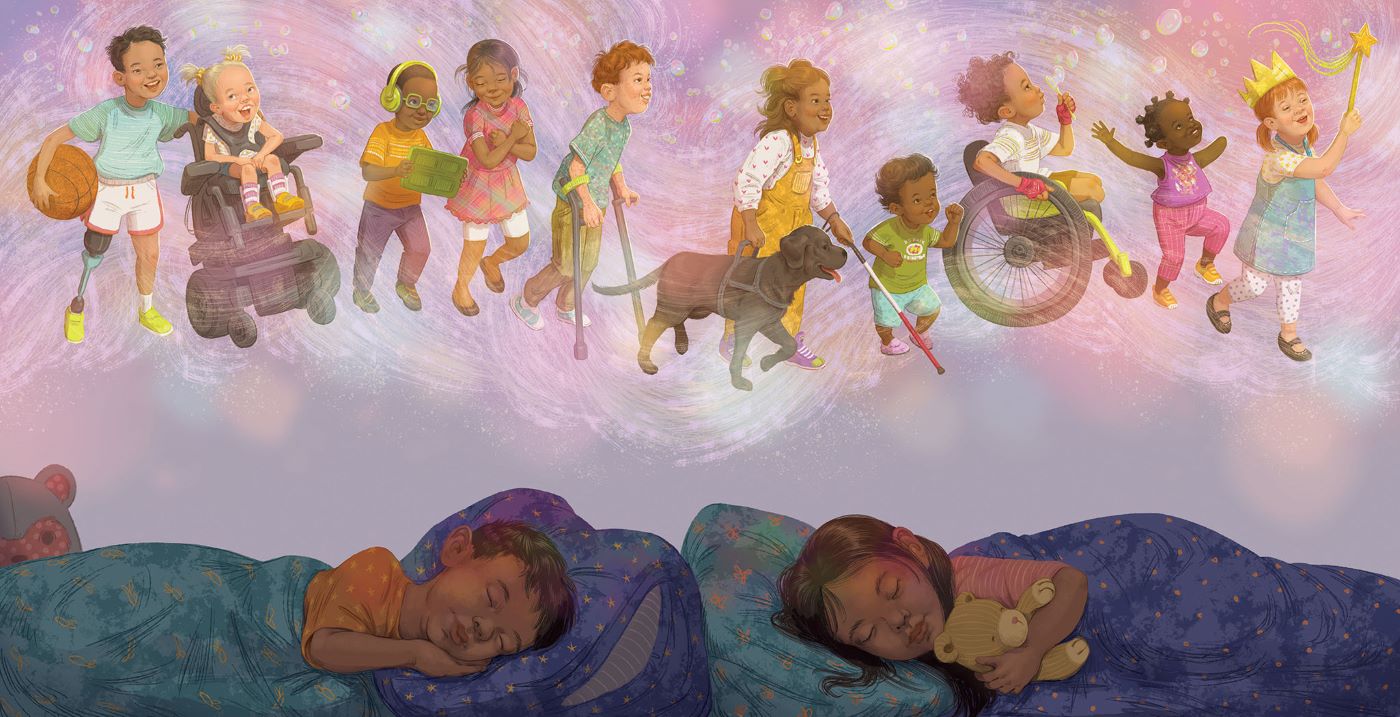
Illustration © Kayla Harren
JB: Who do you perceive the target audience to be for This Is How We Play and why?
KH: Everyone! I think this book will be fantastic for families with members who are disabled to see themselves reflected in a picture book. I think it will be equally fantastic for people who don’t have disabled family members to learn and be exposed to all kinds of people in a safe space that allows for open conversations and learning. The book was created for young children, but I truly believe picture books have so much to offer people of all ages. I know I certainly learned so much as I was researching and creating the art for this book. The backmatter is a wonderful resource for defining vocabulary words and for guidance on how to talk about disability with kids.
JB: What need(s) does this book satisfy?
KH: Disabled people are not often shown in picture books. The characters in This Is How We Play are not superheroes, nor are they pitiful characters that people need to feel bad for. They are human: complex and beautiful and just living their lives playing with their friends and families. I think that is what people need to see in a book. Disabled people just being people.
JB: How do you see This Is How We Play connecting to curriculum or being used in schools or learning settings?
KH: Classrooms are places where a bunch of kids, all with different backgrounds and personalities and needs, must work together. I think this book would be great if used to start discussions about empathy, adapting, and embracing each person’s unique contributions to the group. I think the illustrations are a good starting point for having conversations and learning. Looking closely at the details in the art might prompt kids to ask about certain adaptive equipment or behaviors.
JB: What project(s) are you currently working on?
KH: I’m working on something related to this book that I don’t think I can talk about yet. Stay tuned! I’m also illustrating a Little Golden Book Biography about Henry Winkler! That book is scheduled to be released in 2025.
JB: What is one question you wish I had asked, and what is your answer?
KH: What are my favorite colors right now?
Answer: Mint green, aqua, and fuchsia.
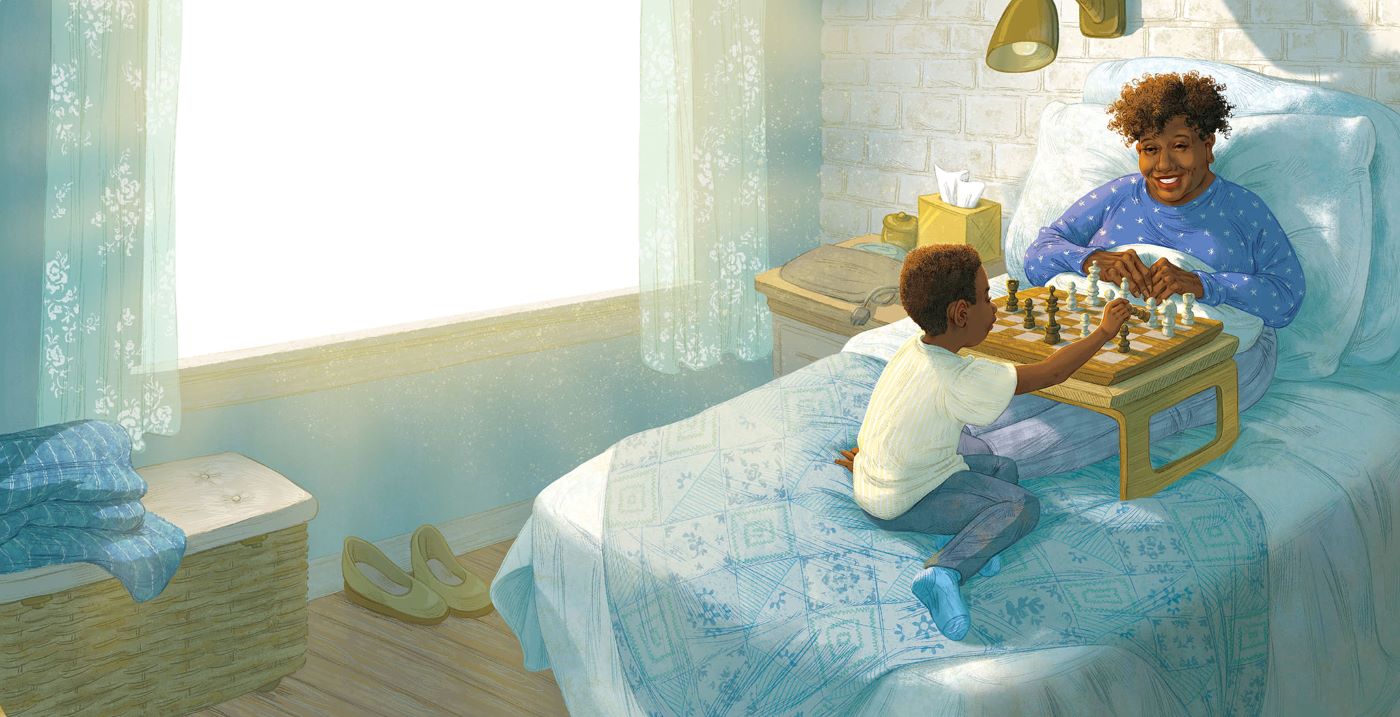
Illustration © Kayla Harren
Also illustrated by Kayla Harren

Meet the Authors of This Is How We Play
Learn more about Jessica Slice and find her on Instagram.
Learn more about Caroline Cupp and find her on Instagram.
Sidebar Spotlight New releases of note
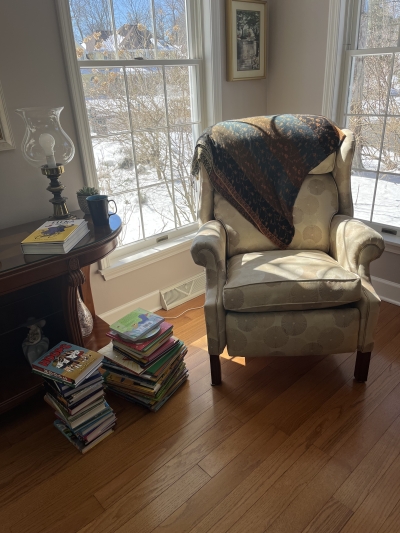
Each month I receive several boxes of books to review from various publishers. As I read and peruse the books, I place them in two piles: those that I will consider featuring on the blog, and those that don’t fit the mission or theme of Children’s Book Corner blog for whatever reason. I highlight some of the books in the “possible” pile on Mondays (most weeks) on Instagram. Ultimately, I choose the one new release I will feature on my monthly blog post. Yet there are many terrific books I wish I could give a shout-out to, even if I can’t write an entire post about each one. So, Sidebar Spotlight is a means of giving a nod to new releases that, in my opinion, are noteworthy. I’ve linked each title to Bookshop so you can learn more. Happy reading, friends! And feel free to comment on these or other new books below.
Have You Seen My Acorn? by DK Ryland is a humorous story that shines light on the importance of active listening. Silly squirrel has misplaced his acorn and though he asks many forest friends if they have seen it, he doesn’t take time to listen to their responses. Kids will enjoy being in the know about what squirrel is overlooking. Various perspectives in the art and the use of panels and wordless spreads add to the interest of this entertaining book that’s sure to appeal to Grades K-2. Recommended read-aloud.
Is That the Bus? by Libby Koponen and illustrated by Katie Mazeika is a recommended board book that is pitch-perfect for the youngest of listeners. As a toddler awaits his sister’s return, he sees a variety of vehicles pass by until—finally!—the school bus, and his playmate, arrive. Simple, satisfying, and relatable for its intended audience.
Leo at Lunch by Anna McQuinn and illustrated by Ruth Hearson is one in a series about the everyday adventures of this appealing toddler. Hooray for this relatable, age-appropriate, concept-appropriate board book that deserves a place on toddlers’ bookshelves and in caregivers’ hands to be read aloud again and again.
Where? by Jordan Collins, illustrated by Phil Lesnie a gorgeously illustrated, evocative picture book that originated as a slam poem offers insight into how the question “Where are you from?” can cause unease and frustration; ideal for older elementary grades and up.
News, Updates, & Items of Interest

Jumpstart’s 19th annual Read for the Record Day is set for October 24th. The book chosen for this year is Piper Chen Sings by Phillipa Soo and Maris Pasquale Doran and illustrated by Qin Leng. Read for the Record is the “world’s largest shared reading experience, celebrating early literacy and supporting children’s early language and social-emotional development. The annual initiative raises awareness of the critical importance of early literacy and access to inclusive, high-quality books through shared reading.” Reportedly, in 2023 2.3 million people in eleven countries and 50 US states and territories participated.
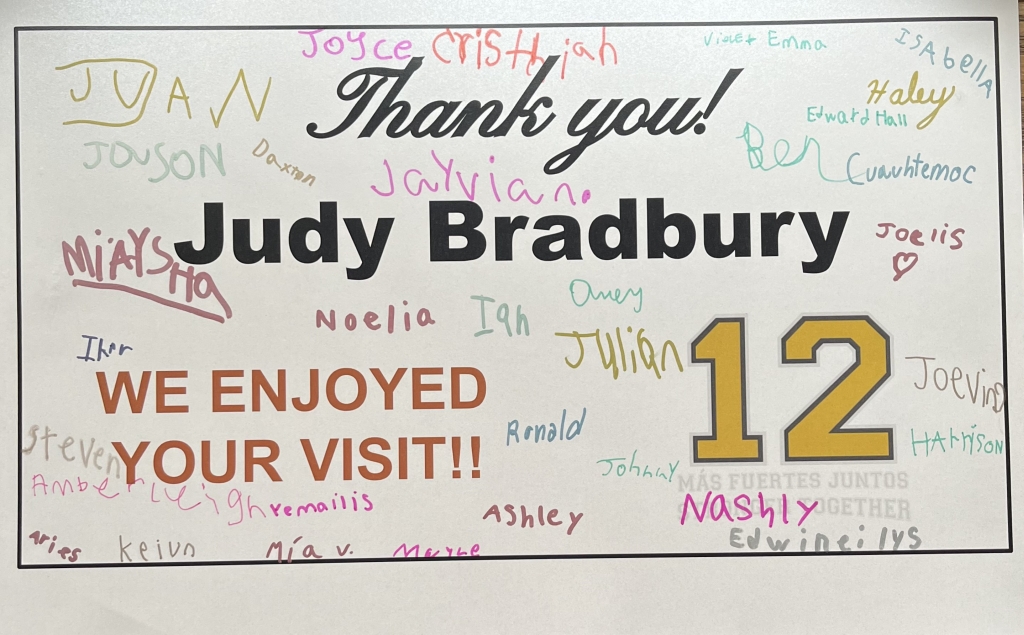
I am currently booking school visits and professional development sessions for 2024-25.
Find information and contact me to discuss a visit tailored to meet your school’s needs.
A note from a teacher whose students I recently visited:
Thank you so much for coming to meet with my students. You were wonderful, answering their questions and explaining how you wrote the book. We all loved it! Here are some illustrated thank you notes the students made for you. Thank you again!
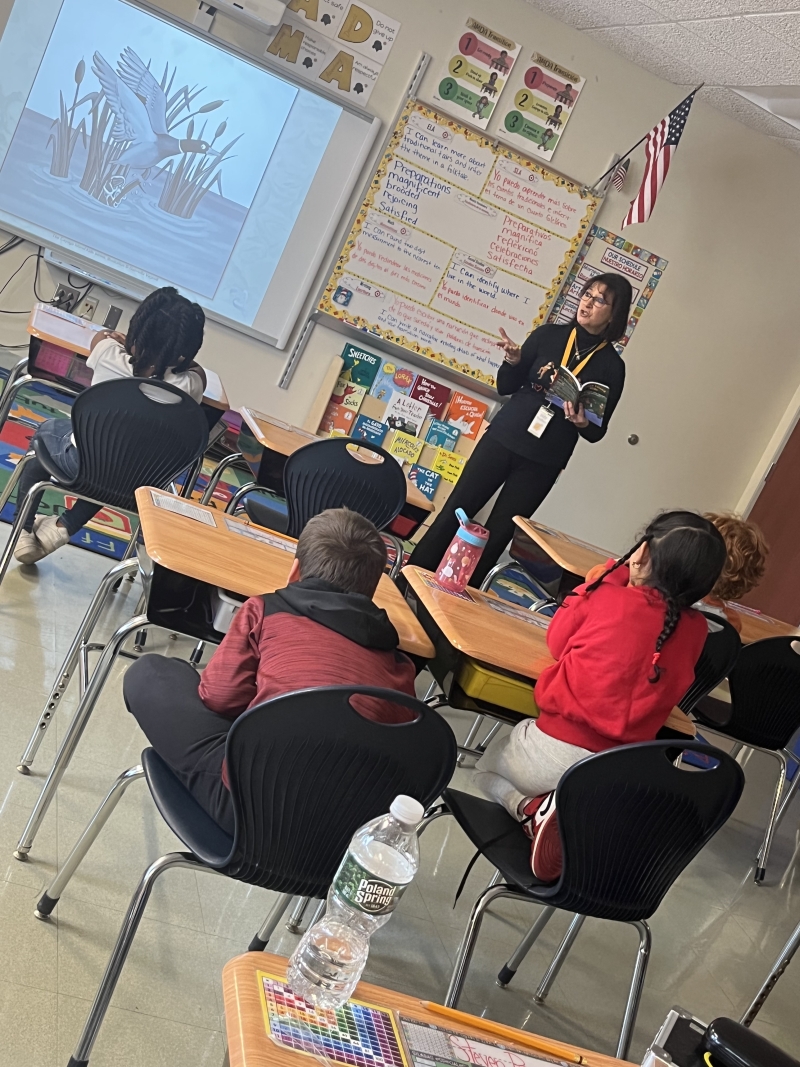
Read-aloud of a portion of Cayuga Island Kids Book 2, The Adventure of the Big Fish by the Small Creek
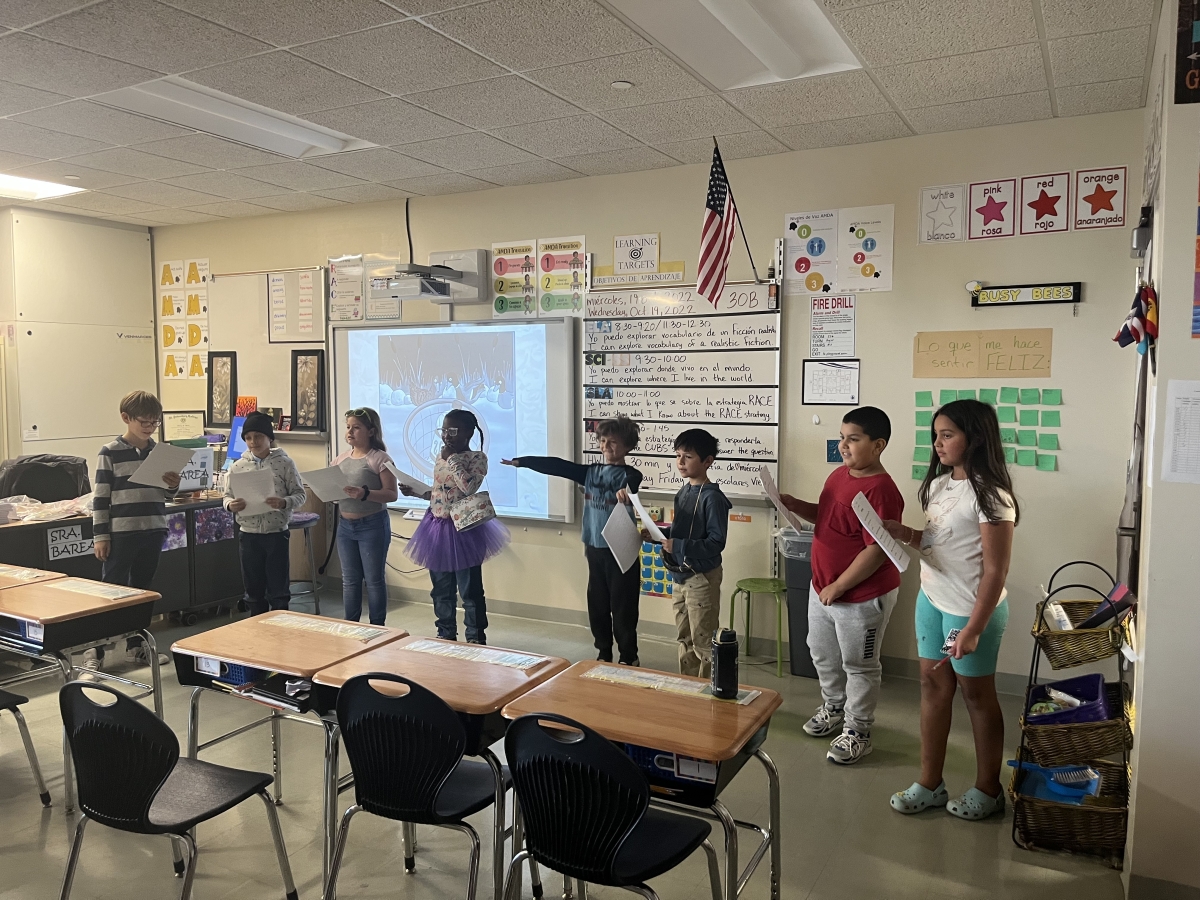
Readers Theater, complete with props!
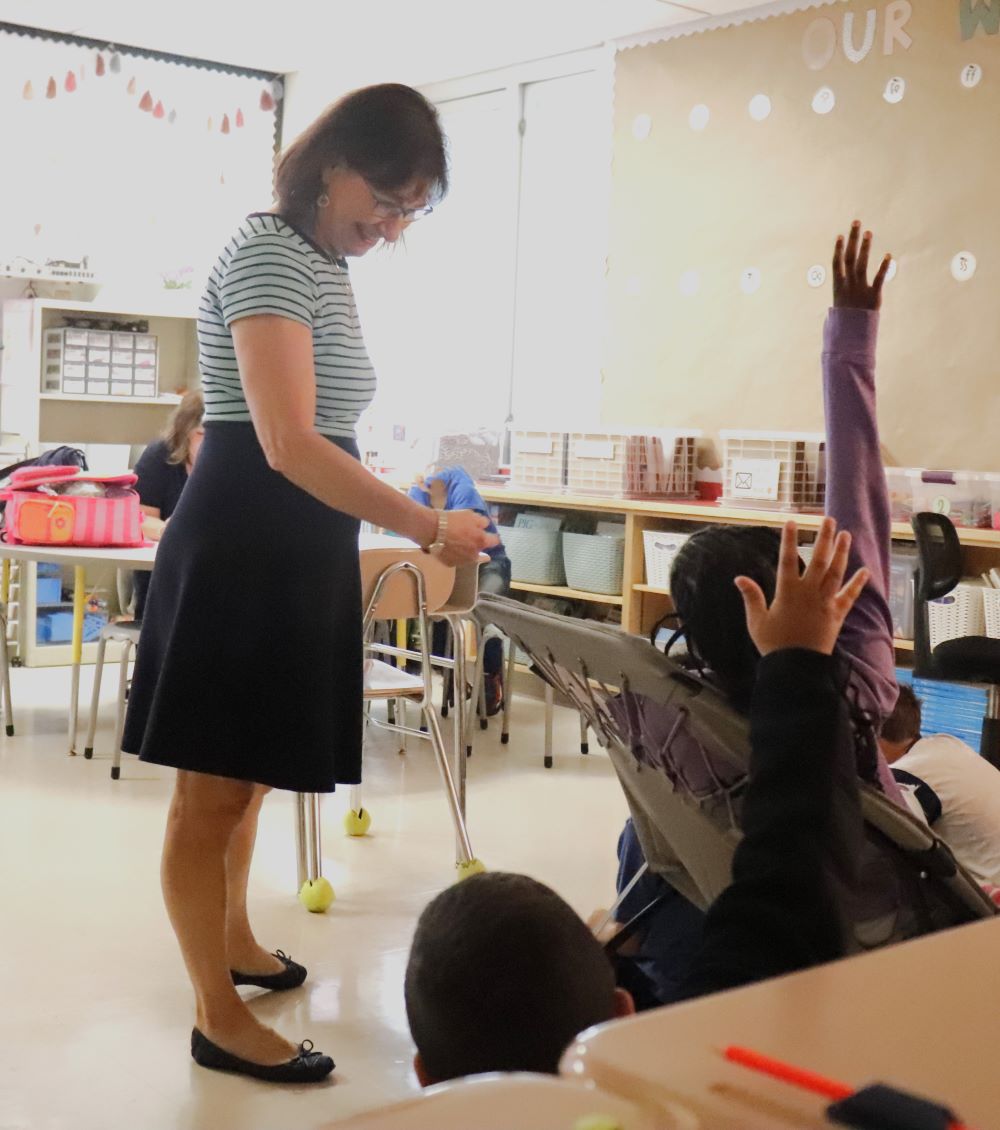
And here’s a note I received after presenting “SEL-Related Children’s Books with Curriculum Tie-Ins” to teachers and librarians in Grades Pre-K—Grade 6:
Thanks so much for presenting! I heard wonderful things about your workshop! One person mentioned to me that you were so organized and passionate. They also loved seeing all the children’s books you brought with you!
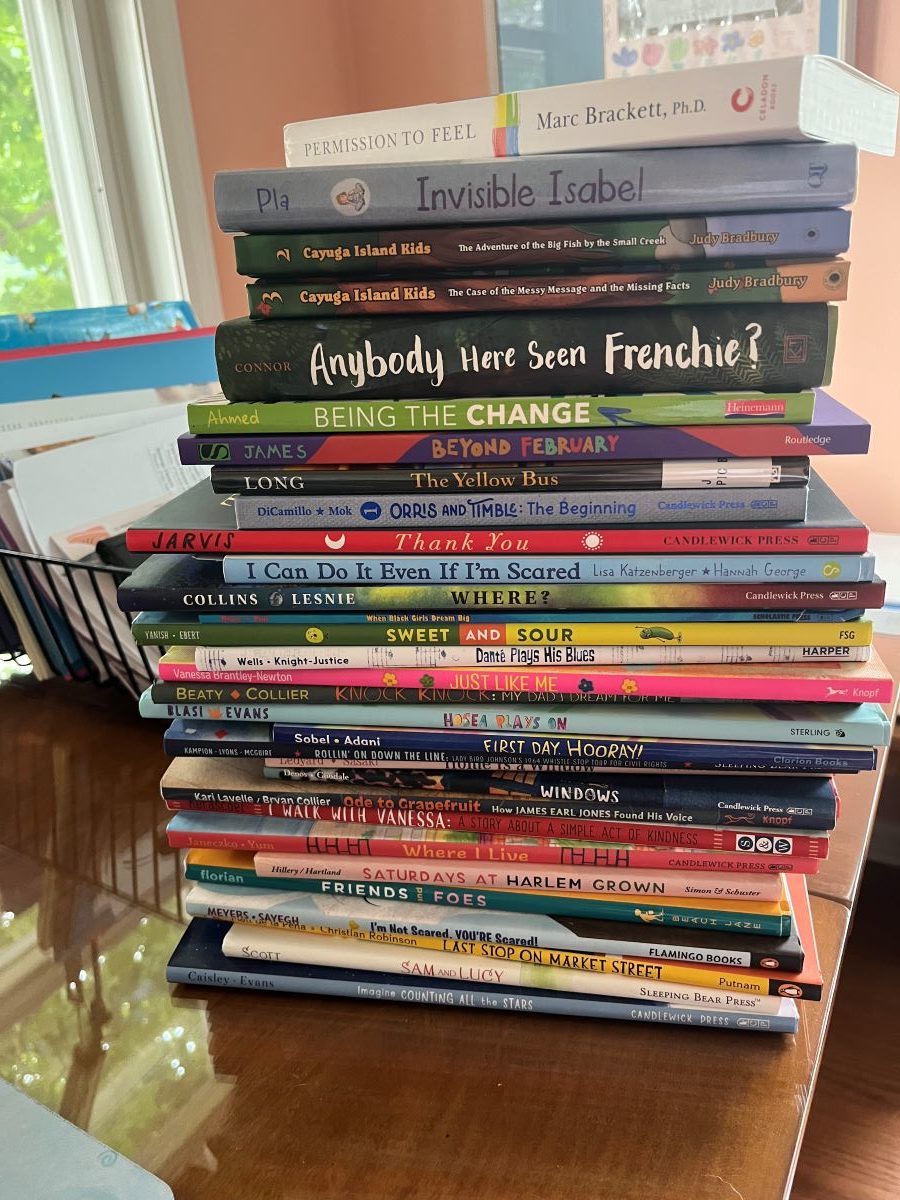
You can find where my books and I will be on my Events page.
Find my books packaged as a series at your favorite bookshop or purchase directly from the publisher and receive a gift with purchase! Individual titles are also available in hard, softcover, and e-book versions.
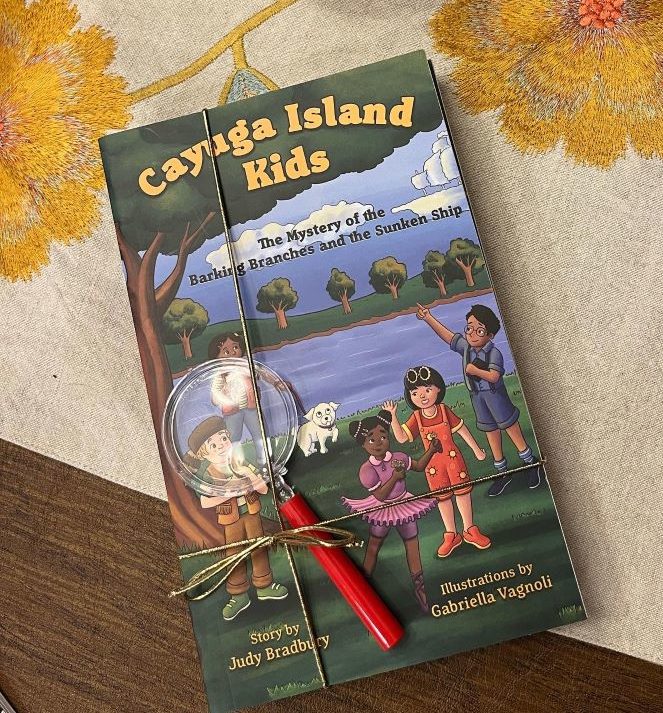
Kindness tip: If you read and like a book, consider posting a review on GoodReads, social media, or on Amazon (if you bought it there). Authors and illustrators appreciate the shout-out. Even a one-sentence comment increases visibility of a book. Also consider placing a request with your local library to purchase a copy–another free way to support a book you recommend!
Over to You…
Join the conversation! Offer your thoughts on this featured prompt related to this month’s post:
What book for young readers and listeners that shines a light on disability do you recommend? Share the title, author, and illustrator in the comments section.
You are also welcome to post a general comment.
Thanks for sharing your thoughts!
Final Thought
“We all go through hardship and trauma and tough times in life, and we all have the capacity to rise back up.”
~ Ali Truwit, 2024 Paralympic Dual Silver Medalist in Swimming, who lost part of her left leg as a result of a shark attack in May, 2023

